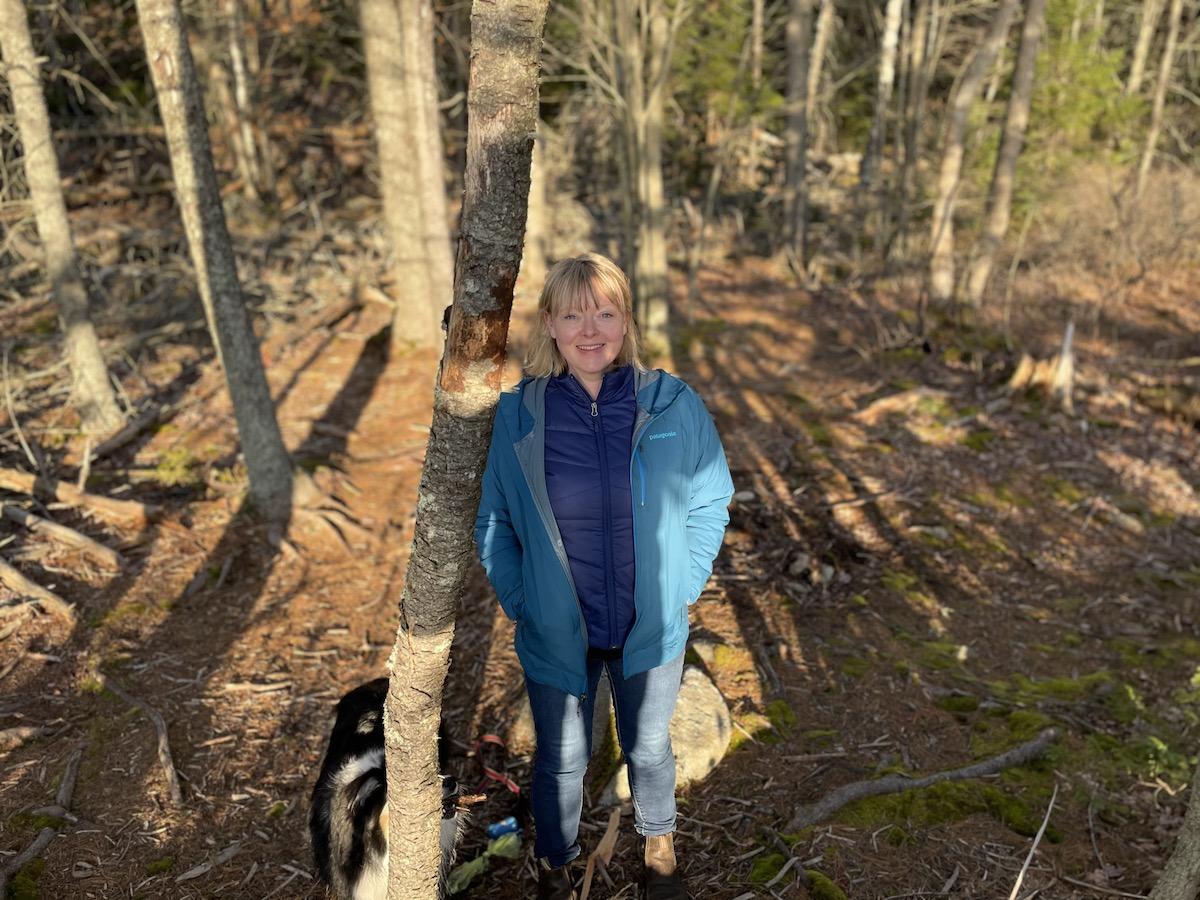
Hilary Harrop-Archibald is a climate change specialist with Parks Canada/Hilary Harrop-Archibald
Growing up in Nova Scotia, attending a high school with an outdoor education focus, taking a sustainable forestry course that asked her to connect how clearcutting killed Atlantic salmon, and joining annual field trips to Kejimkujik National Park and National Historic Site, Hilary Harrop-Archibald always had her eye on an eventual career with Parks Canada.
“It’s the place I’ve wanted to work since I was really, really young,” she says. “There are so many opportunities to do different things if you are mobile.”
Harrop-Archibald joined the federal agency in 2017 as a resource management officer with Kejimkujik, did a stint at Terra Nova National Park in Newfoundland and Labrador, and then moved to Prince Edward Island to be a Nature Legacy ecosystem scientist focusing on climate change. Now she’s back In Nova Scotia as a climate change specialist with a national mandate.
She holds a doctorate in ecology from the University of Western Australia and was part of its ecosystem restoration and intervention ecology research group. Her PhD research focused on interactions between plants, fungi and invertebrates, and the influence of these interactions on decomposition processes in modified and restored ecosystems. While climate change wasn’t a focal area, “nothing is completely separate from climate change.”
Every summer, she teaches an online continuing studies course about climate change in ecological restoration that she developed for the University of Victoria. And for Parks Canada, she’s involved in national initiatives and partnerships, supporting conservation and restoration programs in areas like restoring forests, saving endangered plants and mitigating invasive species.
“Through her work, she developed a series of site-specific climate change trend and projection reports which now help park managers make informed decisions,” Parks Canada said in a recent tweet celebrating #WomenInSTEM (science, technology, engineering and mathematics). To which Harrop-Archibald, now 40, says: “We want to inspire the next generation of women to enter into the field.”
Harrop-Archibald was indeed co-author of a 2020 report titled Climate Change and Protected Places: Adapting to New Realities. It offers a five-step adaptation framework that’s scalable, adaptable and can be applied to various resources, including natural and cultural heritage, built assets and visitor experience. Because of it, hundreds of adaptation options have been identified and dozens of actions have been prioritized for implementation.

Parks Canada is working out how to cope with European green crabs, an invasive species/DFO-MPO
She collaborates with the Canadian Centre for Climate Services to develop climate summaries for national parks and national historic sites. The two-page documents present the park/site context and detail changing climate variables like sea levels, storm surges, wildfires, floods, hail, changes in precipitation (rain and snow), shoreline erosion and seasonality (the timing of spring). Also on her radar is the arrival of new invasive species, like European green crabs that destroy eelgrass meadows and consume juvenile soft-shell clams at Kejimkujik, and the hemlock woolly adelgid (HWA), an aphid-like insect that kills hemlock trees that’s now in Atlantic Canada.
“As temperatures warm, green crabs will be moving up the coast beyond Nova Scotia,” warns Harrop-Archibald.
She wants people, especially women, to pursue careers in conservation, restoration and climate change, and to consider summer jobs and volunteer opportunities to get engaged. "Put your hand up when new opportunities come up, even if it’s outside of your comfort zone,” she says. “It’s not just about learning. It’s also about community and finding different ways to enjoy being outside.”
A final piece of advice: “Don’t just learn what other people have discovered. Look for gaps or unknowns, because this is where the real opportunities are.” Her background was in restoration ecology where climate change was “something put on a sticky note on the board and left there” without really being unpacked. “Over time it became apparent that climate change is one of the most pressing issues of our time.”



Comments
A great profile of a great climate change scientist! For those not on ResearchGate, the Park Stewardship Forum publication is available here: https://doi.org/10.5070/P536146399